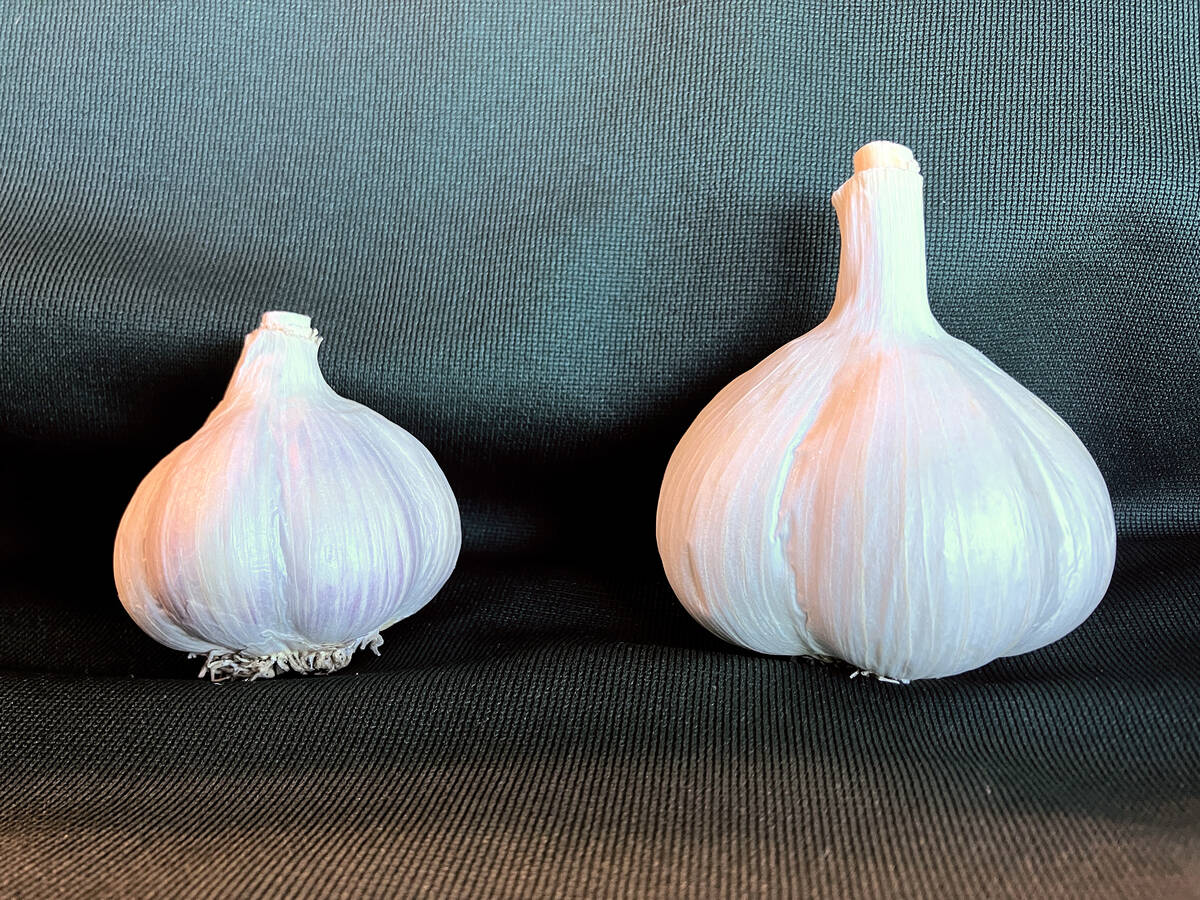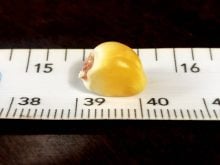Corn technician Jonathan Brinkman noticed unusual symptoms on his field plot at the University of Guelph, Ridgetown campus last September.
Several crop leaves displayed a raised, black, tar spot type lesion, similar to those found on ornamentals and maple trees.
He suspected tar spot.
Read Also

Clean seed garlic promises bigger bulbs and higher returns for growers
Ontario garlic trials show clean seed outshines conventional yields, with stronger drought resilience, reduced virus risk and greater economic outcomes.
Why it matters: Tar spot is an emerging fungal threat in Ontario hybrid corn capable of reducing yields and spreading if the conditions are favourable for the fungus to jettison its spores in the wind.
“When the temperatures became cooler later on into August, that is the sweet spot for this disease in terms of development,” said Albert Tenuta, field crop extension plant pathologist with Ontario Ministry of Agriculture, Food and Rural Affairs at the recent Ontario Soil and Crop Improvement Association annual meeting. “It wasn’t unusual that we would have seen at around that late September timeframe.”
Tenuta said tar spot was initially confirmed along the Indiana-Illinois border in 2015 and moved through the United States corn belt to Michigan, where it remained poised for the last few years.
“It’s a pretty easy disease to identify. There is another variation of it as well where you have the black tar spots there too, but you have this necrosis or killing of the leaf,” said Tenuta. “So you end up with this halo around the leaf symptom.”
Tar spot doesn’t rub off
A simple test for tar spot is to wet your fingers and rub them over the leaves. If it’s insect scat, mould or aphids it will rub off, whereas tar spot feels like sandpaper and won’t rub off.
Tenuta wasn’t surprised it showed up in Chatham-Kent, however. Since Sept. 21, Essex, Lambton, Elgin and Middlesex have recorded low levels as well. One field in West Elgin showed higher concentrations, and one of the hybrids suffered a 10 per cent yield loss.

Tenuta said changing hybrids is ineffective against tar spot because all are susceptible, and plowing under residue has no real effect.
“Be aware of it, don’t fear tar spot. Continue to scout it,” he said. “It is here, it will overwinter, and unfortunately probably spread more through the southwest and into Ontario.”
The spread of tar spot will likely mimic the progression of current corn diseases, he said, adding the risk will depend on what happens in the U.S.
“It’s airborne. The risk isn’t so much from the little bit that we’ll have in Ontario,” said Tenuta. “It’s going to be what’s developing in the U.S.”
If the U.S. weather is cool and wet early on, it will increase the risk in Ontario. If it isn’t, it will mimic 2020 with a risk for late infections, which will have little impact.
“We’ve been working a lot with fungicides for northern corn leaf blight, gray leaf spot and other diseases. The good news is they also are working very well against tar spot.”
The tassel-to-silking time is usually the same time for tar spot, said Tenuta.
Scouting will play an integral role within the ipmPIPE pest mapping and forecasting system, said Tenuta, advising farmers to be diligent.
Tenuta encouraged farmers to access tar spot resources through ipmPIPE corn, the Crop Protection Network and the Field Crop News or connecting with him at [email protected] or @AlbertTenuta.















